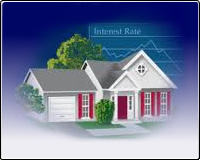Although,..If a borrower opts for the low rate ARM, the uncertainty rises. It is possible to get close to balance, but it's not easy. Understanding the different types of mortgages is a critical first step to getting a home loan. The two primary types of mortgages are Fixed-Rate and Adjustable-Rate Mortgages (ARMs). There are many variations within those two, and in general, it comes down to your personal needs, attitude, and especially how long you plan to be in the house.
Fixed-rate Mortgages
Fixed-rate mortgages are easiest to grasp: They generally have repayment terms of 15, 20, or 30 years. The interest rate and the monthly payment do not change during the life of the loan, though the amount of principal and interest applied to the payment does vary as the loan matures. Homeowners like this kind of loan because they always know how to budget house payments, and it also provides them with a hedge against inflation.
At the beginning of the loan, most of the monthly payment goes toward interest, rather than principal. As the loan ages, more of the payment goes to principal until the loan is paid off. The amount of total interest paid depends on the length of the loan; a shorter loan, say for 15 years, will have lower interest than a loan that stretches over a longer period. However, payments on a 15-year loan will be higher than a longer term loan simply because the principal has to be paid off in a shorter amount of time. A 30-year mortgage is more popular because payments are lower due to the longer term of the loan.
The downside of the fixed-rate mortgage is that borrowers might pay a higher interest rate, and if interest rates drop, they will want to refinance — an expensive option. If they are planning to stay in the house for 15-20 years, though, this is a conservative way to go. But if they are thinking of moving in five years or so, the borrower might end up paying more in interest than if he had a more reasonable ARM.
Adjustable-Rate Mortgages (ARMs)
Adjustable-Rate Mortgages (ARMs), also known as variable-rate loans, usually offer lower rates at the beginning of a loan, but then the rate fluctuates over the life of the loan based on market conditions. (The loan agreement generally includes maximum and minimum rates, so there are some set parameters to protect the borrower.) The initial interest rate is typically set below market rate for a fixed-rate loan, but the rate will ultimately increase and could total more than that of the fixed-rate mortgage.ARMs have a fixed rate for a period of time, and then the rate is adjusted according to the index a particular loan is based on. Borrowers pay more to get a longer fixed period initially; the shorter the period, the lower the rate. After that, adjustments are made on an agreed-upon frequency schedule.
Borrowers with an ARM benefit in the event interest rates fall; their monthly payments will fall right along with them. But the converse is also true: If the rates rise, so do the payments. This uncertainty drives some people crazy, while others are willing to ride the roller coaster.
First-time home buyers can also qualify for a higher loan with an ARM because of the lower interest, but they need to consider what happens when the rate rises. They are betting that they'll save enough initially to offset a future rate increase.
If a home buyer plans to stay in the house a short time and the house is appreciating in value, they could end up paying less than they would with a higher-rate Fixed Mortgage.
About Those Option ARMs
There are many kinds of ARMs, but a popular one in the recent past as home values jumped out of reach of potential buyers is the option ARM. Option ARMs are adjustable-rate mortgages that allow the borrower to pay only a minimum required payment monthly, sometimes so small that it doesn't cover the interest, let alone the principal. Borrowers can choose how much they want to pay over the minimum, but often pay just that, which means they are actually adding to their debt with every payment. They end up owing more on a house with every payment!At some period after the loan begins, the required payments increase so that the loan can be paid off by the end of the term. Since the loan has increased — and often the interest rate has risen — the payments are sometimes disastrously high.
It is extremely important that borrowers of any type of ARM understand the details and financial implications of their mortgage to avoid any surprise during the life of the loan.
The views, opinions, positions or strategies expressed by the authors and those providing comments or external internet links are theirs alone, and do not necessarily reflect the views, opinions, positions or strategies of First Capital, we make no representations as to accuracy, completeness, current, suitability, or validity of this information and will not be liable for any errors, omissions, or delays in this information or any losses, injuries, or damages arising from its display or use.


No comments:
Post a Comment
Note: Only a member of this blog may post a comment.